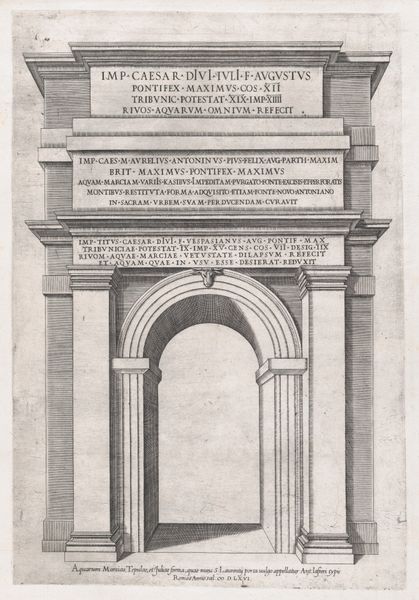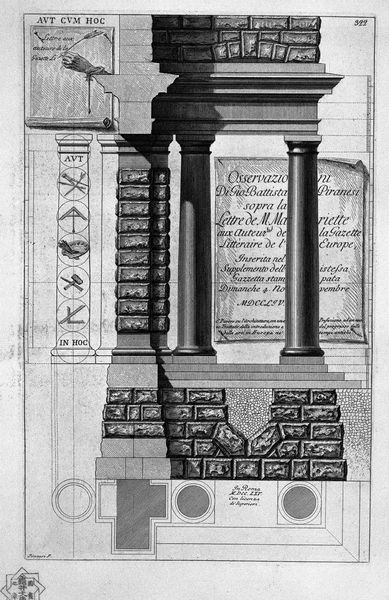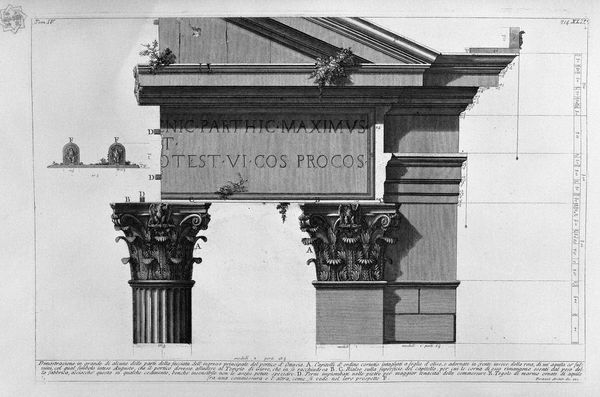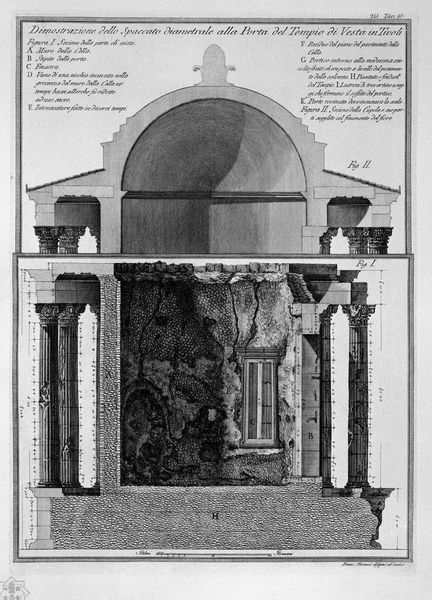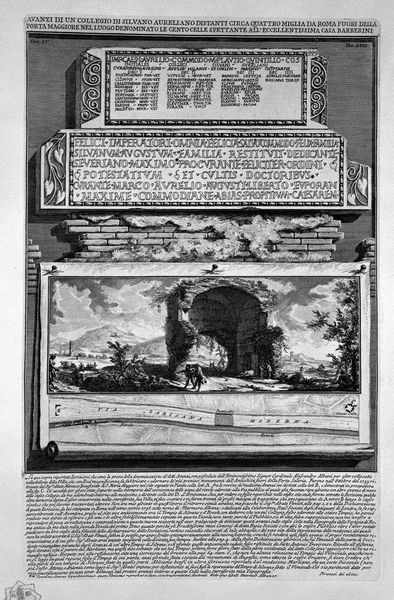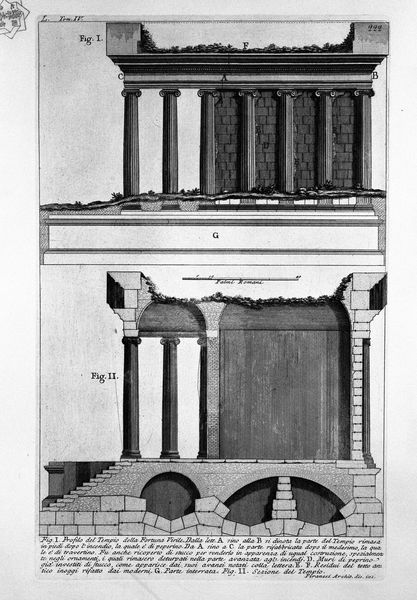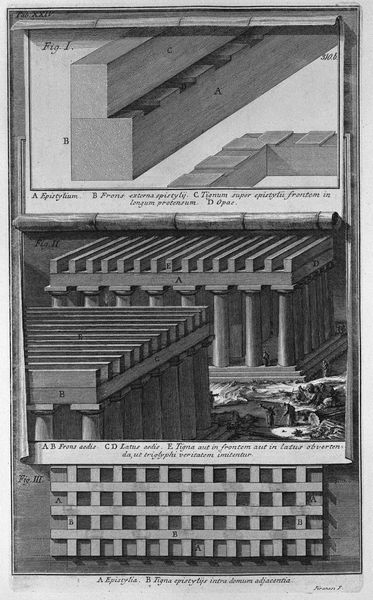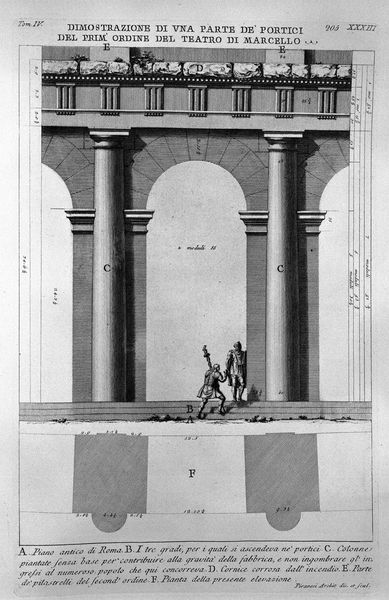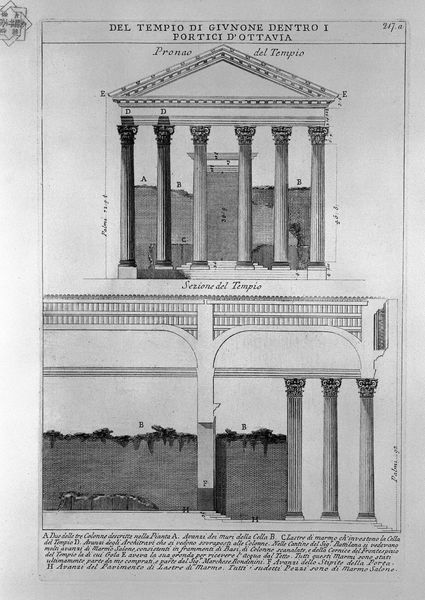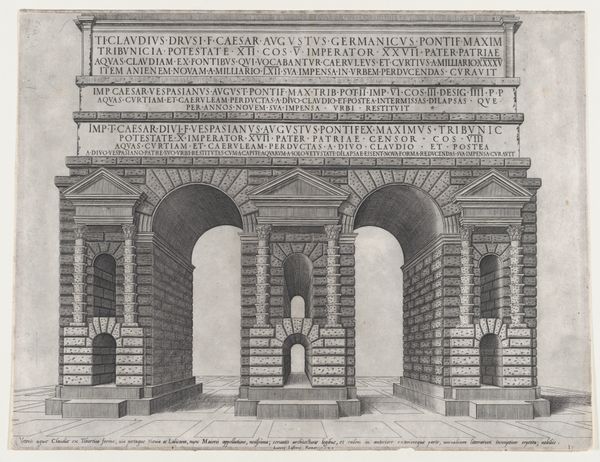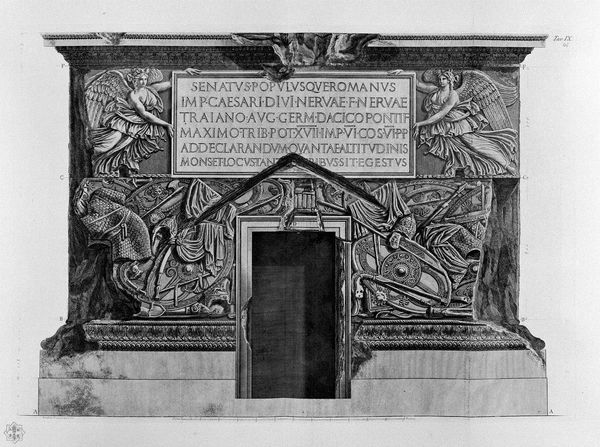
Plan and elevation of the monument of the Waters and Julia Marcia Tepula Porta St. Lorenzo
0:00
0:00
#
architectural sketch
#
storyboard
#
architectural landscape
#
old engraving style
#
holy-places
#
sketchwork
#
column
#
arch
#
architectural section drawing
#
architectural drawing
#
architecture drawing
#
architectural proposal
#
intricate and detailed
Copyright: Public domain
Curator: This architectural drawing presents “Plan and elevation of the monument of the Waters and Julia Marcia Tepula Porta St. Lorenzo,” attributed to Giovanni Battista Piranesi. Editor: Yes, this piece is fascinating. It's rendered in a very detailed, almost technical style. But what strikes me is the imposing sense of power the architecture itself seems to exude. How do you interpret this work, considering its historical context? Curator: I see this drawing as a potent statement about Roman authority and engineering prowess. Piranesi, through his meticulous detail, isn't just documenting a monument; he’s highlighting how architecture serves as a tool to control resources—in this case, water—and, by extension, the populace. The inscriptions proudly declare the emperors’ achievements, linking them to the vital resource and thus, the survival of Rome. Notice how the lettering becomes an intrinsic part of the visual composition, reinforcing power through language and form. Editor: So the monument isn't just about water; it's a carefully crafted piece of political propaganda? Curator: Precisely. Water management was integral to Rome's expansion and social order. Who controlled water had the power. How might its design reinforce social hierarchies? Think of aqueducts as veins carrying the lifeblood of the empire and its capacity to organize and dominate. Editor: That's a powerful analogy. The drawing almost makes me consider the power dynamics present in infrastructure planning even today. Curator: Absolutely. Piranesi’s work reminds us to critically analyze monuments—who they celebrate, whose stories they silence, and what ideologies they reinforce. It prompts a broader understanding of architecture and power, raising contemporary questions regarding environmental justice, access to resources, and the ethical dimensions of design. Editor: Thank you. This piece made me rethink our relationship with these spaces and the history these architectures speak. Curator: Indeed, viewing art with an eye on power and its consequences is the first step toward a more socially conscious and historically nuanced view.
Comments
No comments
Be the first to comment and join the conversation on the ultimate creative platform.
